Ekta Sood
Gaze-enhanced Crossmodal Embeddings for Emotion Recognition
Apr 30, 2022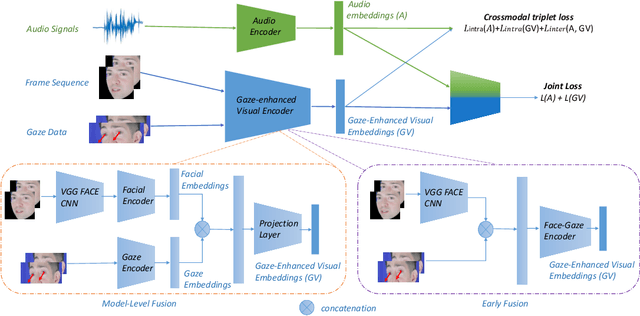
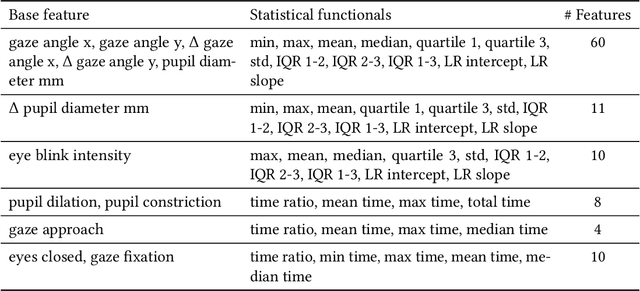

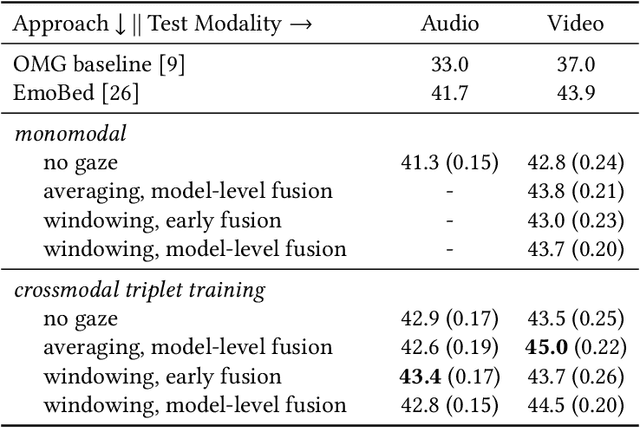
Abstract:Emotional expressions are inherently multimodal -- integrating facial behavior, speech, and gaze -- but their automatic recognition is often limited to a single modality, e.g. speech during a phone call. While previous work proposed crossmodal emotion embeddings to improve monomodal recognition performance, despite its importance, an explicit representation of gaze was not included. We propose a new approach to emotion recognition that incorporates an explicit representation of gaze in a crossmodal emotion embedding framework. We show that our method outperforms the previous state of the art for both audio-only and video-only emotion classification on the popular One-Minute Gradual Emotion Recognition dataset. Furthermore, we report extensive ablation experiments and provide detailed insights into the performance of different state-of-the-art gaze representations and integration strategies. Our results not only underline the importance of gaze for emotion recognition but also demonstrate a practical and highly effective approach to leveraging gaze information for this task.
Multimodal Integration of Human-Like Attention in Visual Question Answering
Sep 27, 2021
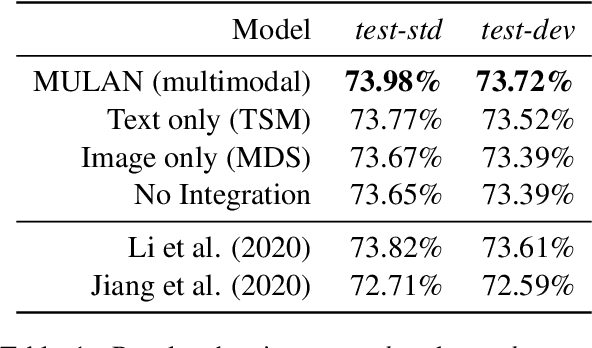
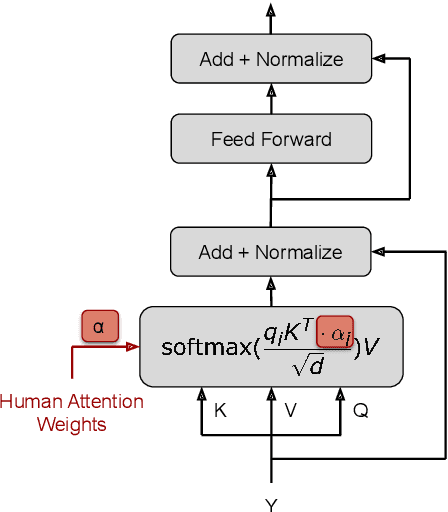
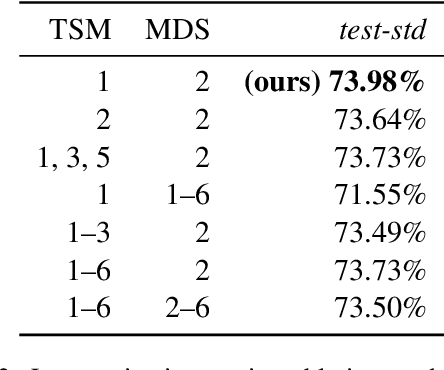
Abstract:Human-like attention as a supervisory signal to guide neural attention has shown significant promise but is currently limited to uni-modal integration - even for inherently multimodal tasks such as visual question answering (VQA). We present the Multimodal Human-like Attention Network (MULAN) - the first method for multimodal integration of human-like attention on image and text during training of VQA models. MULAN integrates attention predictions from two state-of-the-art text and image saliency models into neural self-attention layers of a recent transformer-based VQA model. Through evaluations on the challenging VQAv2 dataset, we show that MULAN achieves a new state-of-the-art performance of 73.98% accuracy on test-std and 73.72% on test-dev and, at the same time, has approximately 80% fewer trainable parameters than prior work. Overall, our work underlines the potential of integrating multimodal human-like and neural attention for VQA
VQA-MHUG: A Gaze Dataset to Study Multimodal Neural Attention in Visual Question Answering
Sep 27, 2021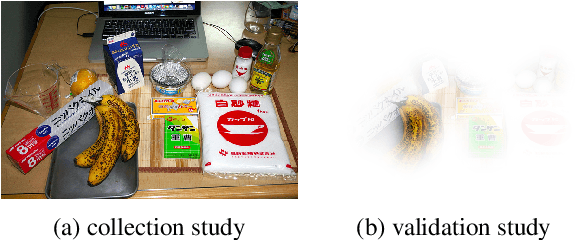
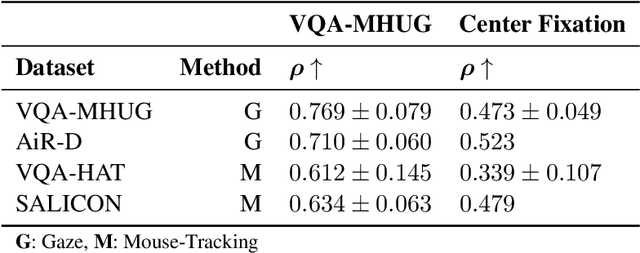
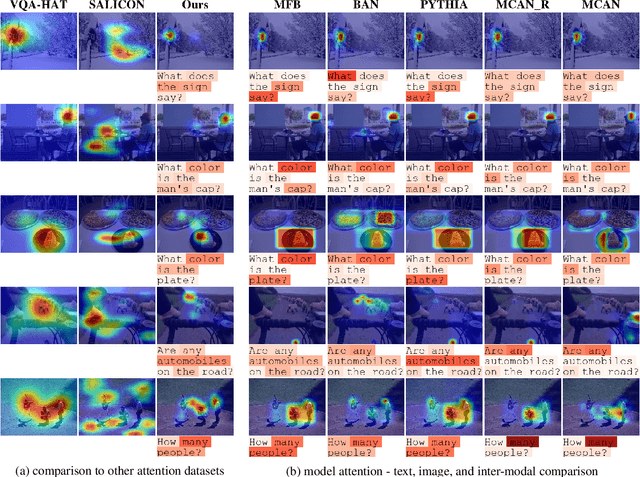

Abstract:We present VQA-MHUG - a novel 49-participant dataset of multimodal human gaze on both images and questions during visual question answering (VQA) collected using a high-speed eye tracker. We use our dataset to analyze the similarity between human and neural attentive strategies learned by five state-of-the-art VQA models: Modular Co-Attention Network (MCAN) with either grid or region features, Pythia, Bilinear Attention Network (BAN), and the Multimodal Factorized Bilinear Pooling Network (MFB). While prior work has focused on studying the image modality, our analyses show - for the first time - that for all models, higher correlation with human attention on text is a significant predictor of VQA performance. This finding points at a potential for improving VQA performance and, at the same time, calls for further research on neural text attention mechanisms and their integration into architectures for vision and language tasks, including but potentially also beyond VQA.
Neural Photofit: Gaze-based Mental Image Reconstruction
Aug 17, 2021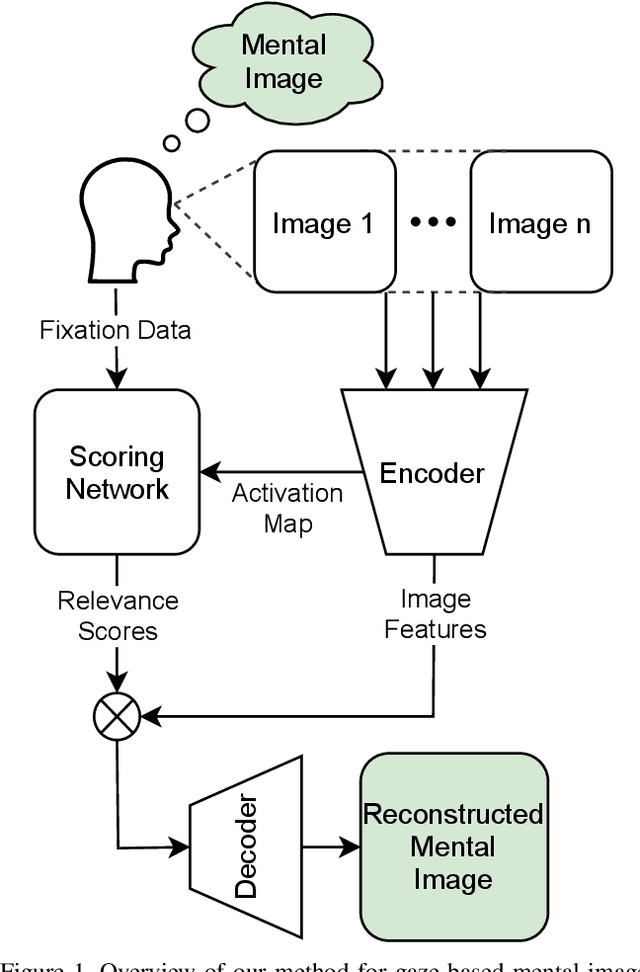

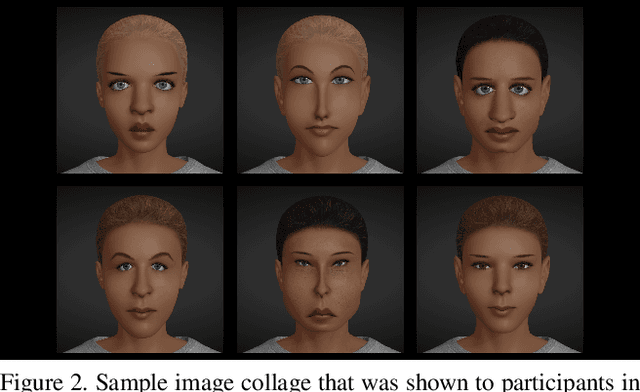
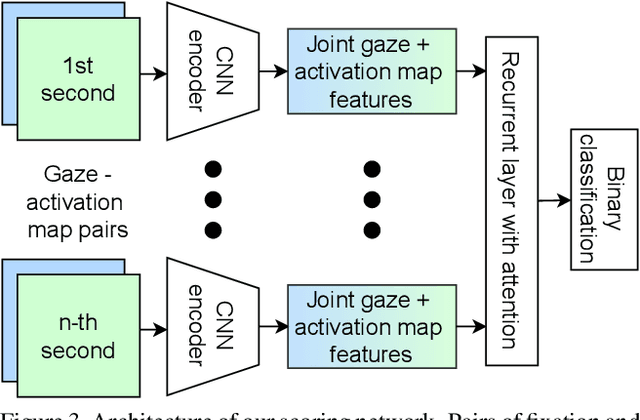
Abstract:We propose a novel method that leverages human fixations to visually decode the image a person has in mind into a photofit (facial composite). Our method combines three neural networks: An encoder, a scoring network, and a decoder. The encoder extracts image features and predicts a neural activation map for each face looked at by a human observer. A neural scoring network compares the human and neural attention and predicts a relevance score for each extracted image feature. Finally, image features are aggregated into a single feature vector as a linear combination of all features weighted by relevance which a decoder decodes into the final photofit. We train the neural scoring network on a novel dataset containing gaze data of 19 participants looking at collages of synthetic faces. We show that our method significantly outperforms a mean baseline predictor and report on a human study that shows that we can decode photofits that are visually plausible and close to the observer's mental image.
Improving Natural Language Processing Tasks with Human Gaze-Guided Neural Attention
Oct 27, 2020



Abstract:A lack of corpora has so far limited advances in integrating human gaze data as a supervisory signal in neural attention mechanisms for natural language processing(NLP). We propose a novel hybrid text saliency model(TSM) that, for the first time, combines a cognitive model of reading with explicit human gaze supervision in a single machine learning framework. On four different corpora we demonstrate that our hybrid TSM duration predictions are highly correlated with human gaze ground truth. We further propose a novel joint modeling approach to integrate TSM predictions into the attention layer of a network designed for a specific upstream NLP task without the need for any task-specific human gaze data. We demonstrate that our joint model outperforms the state of the art in paraphrase generation on the Quora Question Pairs corpus by more than 10% in BLEU-4 and achieves state of the art performance for sentence compression on the challenging Google Sentence Compression corpus. As such, our work introduces a practical approach for bridging between data-driven and cognitive models and demonstrates a new way to integrate human gaze-guided neural attention into NLP tasks.
Interpreting Attention Models with Human Visual Attention in Machine Reading Comprehension
Oct 27, 2020



Abstract:While neural networks with attention mechanisms have achieved superior performance on many natural language processing tasks, it remains unclear to which extent learned attention resembles human visual attention. In this paper, we propose a new method that leverages eye-tracking data to investigate the relationship between human visual attention and neural attention in machine reading comprehension. To this end, we introduce a novel 23 participant eye tracking dataset - MQA-RC, in which participants read movie plots and answered pre-defined questions. We compare state of the art networks based on long short-term memory (LSTM), convolutional neural models (CNN) and XLNet Transformer architectures. We find that higher similarity to human attention and performance significantly correlates to the LSTM and CNN models. However, we show this relationship does not hold true for the XLNet models -- despite the fact that the XLNet performs best on this challenging task. Our results suggest that different architectures seem to learn rather different neural attention strategies and similarity of neural to human attention does not guarantee best performance.
Comparing Attention-based Convolutional and Recurrent Neural Networks: Success and Limitations in Machine Reading Comprehension
Aug 27, 2018



Abstract:We propose a machine reading comprehension model based on the compare-aggregate framework with two-staged attention that achieves state-of-the-art results on the MovieQA question answering dataset. To investigate the limitations of our model as well as the behavioral difference between convolutional and recurrent neural networks, we generate adversarial examples to confuse the model and compare to human performance. Furthermore, we assess the generalizability of our model by analyzing its differences to human inference,
 Add to Chrome
Add to Chrome Add to Firefox
Add to Firefox Add to Edge
Add to Edge